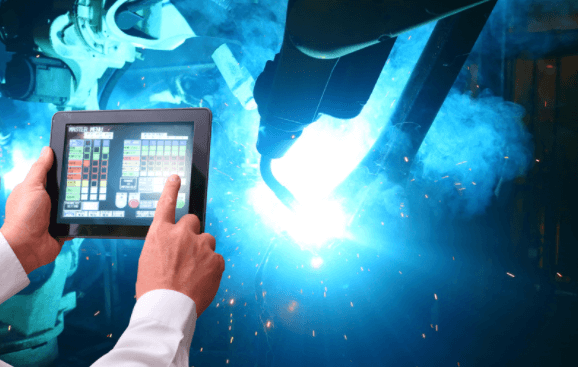Not much gets done when separate parts do not function together.
Manufacturing Execution Systems (MES) are software solutions that connect different components and stakeholders in a manufacturing facility. It also can connect and disseminate data to the wider supply chain and other functions of the organization. Data infrastructure forms the backbone of industry 4.0. MES systems make the collection, engagement, and analysis of data easier.
Let us first get familiar with the concept of MES systems.
Manufacturing Execution Systems
Software tools have become a mainstay in virtually all industries. A simple definition for MES can be the use of software tools to assist and improve manufacturing processes. But this is an understatement. MES systems accomplish much more in the setting of a manufacturing facility.
A car factory produces different variants of the same model. Depending on the variant the components that need to be assembled are different. But the basic structure of one model of car will be the same for all variants. Workers in the assembly line will have to use the parts for the particular variant built in front of them.
A simple example of how MES systems help in manufacturing can be enlightening. In a traditional assembly line, the car’s body had a marking or tag indicating the variant name. The workers will have a table of components for the particular variant in the paper form. They have to cross-match them and assemble the parts from memory and training. With MES systems,
- The name of the variant will be on a display
- There is a checklist of steps to be taken in the required order on the display
- The parts and tools required for each step are available on the display
- The standard operating procedure for the step is displayed in text and graphical forms
- Workers can mark the completed steps
- The car on which the work is completed moves forward and the next car comes forward on the intimation of the technician
- All the information is accessible from anywhere
MES systems help to simplify, organize, automate, and streamline the manufacturing process.
MES Systems: Data Collection
A large amount of data is helpful to improve and automate processes. MES systems help in large-scale data collection across the manufacturing process. Without MES, data collection was done physically. An employee had to go to each station on the factory floor and record the data manually. The data collected in this manner was never real-time as the variables keep on changing regularly.
MES system can collect and record data in real-time. The changes in inventory levels are automated according to the progress of manufacturing. When a technician records that a particular task is complete, the inventory level is adjusted instantly. In addition to that MES systems can collect different sorts of data including time taken for each step, at each station, by each employee. It can also track data regarding accidents happening in the manufacturing facility.
The Industrial Internet of Things (IIoT) is gaining adoption. IIoT devices generate a massive volume of data every instant. MES systems work well with IIoT systems. They can collect, assimilate, and organize data. In short, MES systems can be set up so that any relevant information regarding the manufacturing process can be captured. It need not be limited to just one manufacturing facility. It is capable of enterprise-wide scalability.
MES Systems: Data Engagement
Data stored in itself is not valuable. It has to be used in the decision-making process to create value. Using MES systems, you will be able to create different user profiles to access data. Rules and policies can be implemented depending on the different roles. The different roles will have different levels of access to data. This ensures that the right employee always has data relevant to base their decisions on.
Top-level executives have complete data visibility of the whole manufacturing plant or across the enterprise. This aids in the higher-level decision-making and strategy formulation. MES systems provide the ability to sense the pulse of the production process from a single console. The factory level data can also be coupled with production requirements, build schedules, data from vendors, logistics information, and supplier data to make better informed decisions.
Raw data is not the best way to consume data. Graphical representation of data is easily digested compared to raw data. MES systems have data visualization tools to make data easier to access. They have charts, tools, and other visualization techniques built in. They also have automated reports generated according to the required specifications. All these tools available with MES systems make data engagement seamless.
MES Systems: Data Analysis
Data collected has key insights regarding the plant operations. Manufacturing process improvements can be ideated and executed from these insights. Direct human engagement does not capture all the insights contained in the data. Artificial intelligence and machine learning algorithms are much more suited to extract key insights regarding the manufacturing process.
MES systems come with powerful data analysis tools. These extract insights from data regularly and can be used for process improvement. MES systems are integrated with the cloud and can easily transfer data for analysis using any other tool. This makes MES systems a versatile data analysis tool for the manufacturing industry.
Last Words on Manufacturing Execution Systems
MES systems are the one-stop solution for all data needs for any manufacturing facility. It makes data processing simpler, faster, and efficient. MES systems are designed with data use cases for manufacturing settings. They will help you get closer to the challenging paradigm of industry 4.0. A modern manufacturing software solution like RedViking’s Argonaut® is equipped with functionality and tools that go beyond traditional MES systems. It has a wide range of manufacturing apps that are configurable and flexible to the needs of your facility. To know how you can solve your manufacturing data woes and improve productivity, start a conversation with us.







